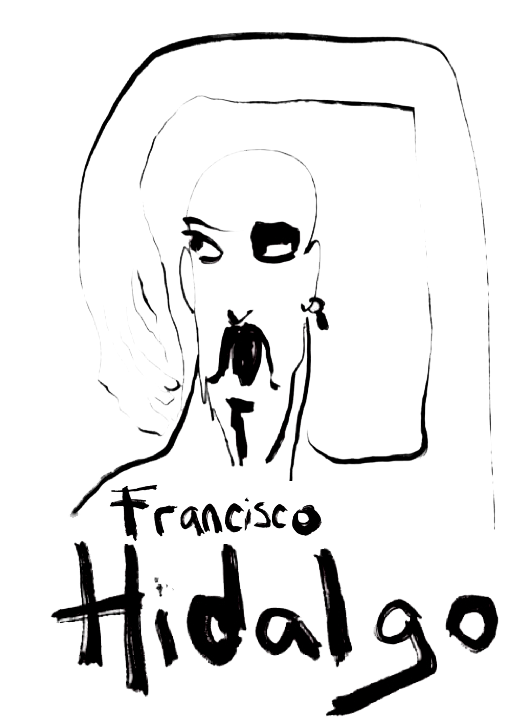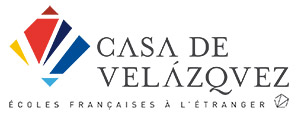


MOSCAS Y DIAMANTES
The pictorial series La Edad de la Ira by Oswaldo Guayasamin came to me by chance at a time in my life when I felt lost due to my interest in presenting a work with which to define myself as an artist beyond conventional dances and forms and for the ignorance of not knowing where to start to find results.
This loss was fueled by the fear I have always had of how I would be seen by the eyes of others, including my family.
...I seek and need to free my body and mind in space to get rid of my inner flies and find the diamonds that my perfect world holds.
To come across Guayasamin's work was to find answers to all the doubts that were going around in my head, in it, I saw reflected that form of dance that appeared when dancing in solitude I left my mind blank. In this painting I saw dance, I saw poetry, I saw beauty, I saw a dancer telling his story through dance but also through shouting, facial disfigurement or interpretation.
Thanks to this artist I have been able to carry out a work of introspection with which to get to know myself, to lose my fear of the unknown and to forgive myself and forgive personal circumstances from my past that did not allow me to be free when it came to defining my future.
The creation through the communication emerged between this pictorial work and my body, with the help of creative tools such as the word, improvisation, the different states produced by different musical genres or through elements such as flowers, fans or chinchines, have served as a bridge to compose the choreographic part of -MOSCAS Y DIAMANTES-.
The search:
̈ Don't be afraid ̈ my mother used to tell me, while my father nicknamed “circus dancer” with disdain, my friends though I was a freak or a “sissy” and for many people around me I was just the kid who had to get the birds out of his head every time I said I wanted to be a dancer.
Although my mom always encouraged me to be the artist I wanted to be, my life circumstances have led me to trace a career influenced by fear, comfort and by what third parties have established as ¨supposedly¨ correct in dance.
In Moscas y Diamantes I want to leave behind all the traumas and complexes adopted in my artistic process to reach the encounter of my utopian world and bring it to the stage. A world where there is no fear, doubt, anger or repression for what is supposedly right in me, a world where my body expresses the person I am and the artist I seek to be, a world where the freedom of my dance prevails over any barrier imposed by the society that has surrounded me.
To do this, I face a work of introspection in which I question myself and reflect on my self-realization as an artist. To find answers, I immerse myself in a process of investigation, putting my body at the service of experimentation and observation.
To reach the deepest self of my being, Belén Maya, a pioneer in flamenco creation from other languages, will guide me through unconventional creative tools of the flamenco genre to position myself in other structures, and in addition, I will approach this process based on the impulses and sensations that some of the pictorial works of Oswaldo Guayasamín (Quito, Ecuador 1919-1999) provoke in me.
The connection I have felt with these works has been immense: the chaos they represent is assimilated to the internal chaos I go through every time I seek myself in dance; their geometrizing deformations reflect the dance of my imaginary world, because I think that imperfection is the beginning of personality and because in it, I draw my body with imperfect lines to assume them as perfect; in the drama of his facial expressions I see my face when I dance; and the humility that these works reflect, they reflect to me the humility with which I consider that one must dance in order to define myself as a unique and human artist.
I seek and need to free my body and mind in space to remove my inner flies and find the diamonds that my perfect world holds.
MATHEMATICAL INMANENCE
A project by the visual artist and professor of Fine Arts at the University of Salamanca Miguel Angel Rego, in which we worked on the processes of intentionality and motor and verbal incapacity in people affected by motor apraxia and Wernicke's aphasia, through the interpretation of a flamenco piece that is altered and broken in its musical execution.
When I investigated these pathologies, I discovered their consequences and began to interpret them. The sensations I found were based on the physical and mental blockage that these disorders can provoke.
...Relief is what I feel when it all passes.
I start to dance and I find it difficult to move, I can't reach the different spaces that my body offers me in other circumstances, which makes me discover small movements both in the joints and in the facial muscles, which can also be considered as dance. I find it difficult to dance from fluidity when it has been easy to empathise with people who suffer from the consequences of motor apraxia.
The methacrylate sheets hanging in the studio mean that I can't dance freely, so I have to find my own way to execute a variation or a simple movement, which brings me closer to the difficulties and barriers that people affected by apraxia face every day.
I continue dancing and while my body is still affected by all these consequences, I dare to sing a lyric from Triana's tangos to discover how the after-effects of Wernicke's aphasia can affect a choreography.
The stumbling in verbal fluency, the presence of unintentional phonemes, or the poor quality of the synthesis that this pathology generates, I put it into practice and my body, unconsciously, becomes small, the movements reach different levels of inclination through a process of anguish and frustration, which leads me to crawl on the floor. When I put an end to these lyrics I feel a pleasant satisfaction, which I believe, is similar to what a person with this condition can feel when they finish deciphering a sentence, a poem or simply a word.
Relief is what I feel when it all passes…
BAILAR A SIQUIER Y A GASPARINI
Thanks to the Mapfre Foundation in Madrid I create a video-dance piece to interpret the social tensions and transformations of Paolo Gasparini and the bodies of Pérez Siquier.
Gasparini's photography leads me to chaos, to overwhelm, even to fear, I need to run while I dance, to hide in a corner of the room to use the walls as a percussive element or to dance to the stillness because of the asphyxiation that his work creates in me.
...I have felt comfortable and free, let me dance naked.
I see myself reflected in the social history of one of his photographs, I need to stop, look at it and reflect on the consequences that this image can cause in my dance, which asks my body, through the sound of its movements, to be the soundtrack of this moment. In spite of the silence and the calm that is breathed in the space, the voices in my head and the eerie noise of a life immersed in chaos make my dance become a scream and my own scream becomes the escape route to interpret this author.
With Siquier's work I corroborated myself that a body branded by society as imperfect, fat, ugly, short or plated can have the same beauty as a body determined as perfect. I visit the exhibition and I want to show my imperfections, I want to show myself as I am, with my belly, bald, with scars, wounds on my knees and a hairy body. A prototypical physique that is rarely shown through dance because of the established aesthetics of a dancer.
Why do we always tend to hide under layers of clothes and filters to show an imposted body, why not show our body as it is? I want to dance free of beauty canons, I want to assimilate the imperfections of my body to make them perfect as Siquier's robust bodies are for me, I want to discover where our body goes when we flee from our physical complexes and show it as it is.
I felt comfortable and free, let me dance naked.
IMPULSOS PICTÓRICOS
I received an invitation from the Casa de Velázquez in Madrid for which I made two improvisations through some works by the resident artists, the aim of which was to determine what dance poetics the body could create from the sensations provoked by them.
Three works exhibited in the same space that take me to three unrelated worlds.
... Before finishing, I sit down on the floor to enjoy this work for the last time, the precious silence that exists and the special energy that I perceive from the people around me.
I decide to start with the work of Rudy Ayoun, a French artist of whom I could understand a contemporary still life because of the importance he gave to the apparent objects in space.
My imagination takes me back to the Andalusian farmhouses of the 19th century, and therefore to my roots and my childhood. This makes my body move from observation and calm to discover how to decode the classical codes of the Cordovan hat and find other aesthetic dynamics beyond those I have used so far. I was closer to it than ever before and at the same time further away to see how a knee, an elbow, a shoulder or a foot can create dance and aesthetic harmonies between this element and the body as valid and beautiful as the conventional ones.
Next, I am inspired by the work of Julien Deprez, a French artist who develops robots dedicated to pictorial creation. My head goes to the avant-garde of Vicente Escudero and I imagine him dancing to the sound produced by the machines in the printing press where he worked, I also think of how his feet might sound when he stamped his feet in the sewers to get acoustics out of them. This makes me focus on trying out what sounds the different corners of the space where I dance can produce, I go around the corners, I climb on a small existing podium, I dance in the centre and play with the different sound states that the space produces.
Honestly, nothing interesting appears more than the mere idea of using different elements in the scene that change the tonality or the acoustics of the “zapateado”. Maybe it is because a constant percussive sound of the feet when dancing is what interests me the least. For me, the tapping of the feet has to be used in the dance just when needed, however I find the most beautiful sensations when I let myself be carried away by the music or by the silence, giving more importance to my body than to the strength of my feet. As we dancers tend to say colloquially, “I am more of a dancer from the waist up”.
Finally, I look at the work of Xie Lei, a Chinese artist who moves between figuration and abstraction. I lean towards the abstract, towards the surreal, my body enters into a state of tension and muscular distention that makes me stick to the ground and my body tremble, finding here other forms of expression that I later develop in the studio to make them my own. After the disorder of the body caused by this trembling I observe the image and it incites me to bleat to silence, the sensations I feel are pleasant because the movements appear fluid. The small sounds produced by my own breathing are also danceable, the floor slabs made of small stones incite me to make precise sounds and all this makes a special magic come out of nothing.
Before I finish I sit down on the floor to enjoy this work one last time, the precious silence that exists and the special energy that I perceive from the people around me.
HOUSE OF FLAMENKA
A London production in which I was commissioned to choreograph the Musical House of FlameKa by the artist Karen Ruimy under the direction of Allene Philin for the Sanderlwell Theatres in London.
The most commercial show I have done, a Musical where the fusion of flamenco with other musical genres has been the main theme.
A project created with 20 dancers from different disciplines (10 of them flamenco dancers) from several research workshops where they found formulas to fuse movements created from flamenco with styles such as pop, rock, or hip hop...


